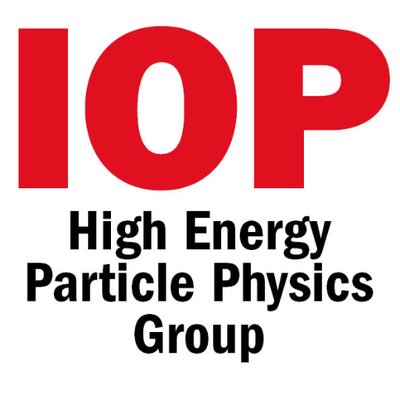- Compact style
- Indico style
- Indico style - inline minutes
- Indico style - numbered
- Indico style - numbered + minutes
- Indico Weeks View
UK-QFT XII
→
Europe/London
IOP
IOP
37 Caledonian Road
London N1 9BU
UK
Description
UK-QFT XII will take place on the 17th of November of 2023 in person at the Institute of Physics (IOP) close to King's Cross station in London.
The UK-QFT meetings provide a unique opportunity to bring together researchers from the UK communities and overseas, who are working at the forefronts of quantum field theory (QFT) and quantum gravity research across high-energy physics, cosmology, and astroparticle physics. Past topics have covered both perturbative and non-perturbative aspects of QFT, and included, for example scattering amplitudes, the quantum effective action, functional renormalization group approaches, lattice field theory, cosmology, non-equilibrium phenomena, phase transitions and topological defects (all from the perspective of the underlying QFT description). The history of the meetings can be found at https://sites.google.com/view/uk-qft.
Postgraduate students and postdoctoral researchers are particularly encouraged to attend and present their work through short accessible talks, providing an inspiring and informal environment for members of the community at all career stages to engage with one another. The meetings are held on a single day, and there are no registration fees, to ensure the widest possible participation. We can provide some travel support within the UK, please indicate if you would like to apply for it when registering.
Follow @uk_qft or join the mailing list at https://sites.google.com/view/uk-qft for information from the UK-QFT community.
We acknowledge funding from the IPPP Durham, the IOP HEPP group and Imperial College London and administrative support from Imperial College London.


/prod01/channel_2/media/migration/staff/Blue-on-white--tojpeg_1495792235526_x4.jpg)
Questions can be directed to Mariana Carrillo Gonzalez and/or Sebastian Cespedes
Participants
Amr Ahmadain
Ana Achucarro
Andrea Sangiovanni
Andrew Tolley
Anne Davis
Ansh Gupta
Antoine Vauterin
Arttu Rajantie
Arvind Shekar
Augustus Brown
Ayngaran Thavanesan
Azadeh Maleknejad
Benjamin Elder
Benjamin Muntz
Bror Hjemgaard
Cameron Beetar
Carlos Duaso Pueyo
Ciaran McCulloch
Claire Rigouzzo
David Waisman Andrade
Deepali Singh
Dong-Gang Wang
Eemeli Tomberg
Emir Sezik
Esra Sablevice
Gabriel Assant
George Doran
Giorgio Mentasti
Graham Brown
Graham Van Goffrier
Guhesh Kumaran
Guillermo Arias Tamargo
Haitian Xie
Harshit Singhal
Haya Almuhanna
James Edwards
Jean Alexandre
Kai Hei Trevor Cheung
Kinga Gawrych
Kruteesh Desai
Kymani Armstrong-Williams
Luxi Zheng
Mang Hei Gordon Lee
Marco Sebastianutti
Mariana Carrillo Gonzalez
Matthew Blacker
Maxwell Hutt
Michael Udemba
Michelle Gurevich
Nathan McStay
Pablo Vives Matasan
Patrick Copinger
Paul McFadden
Paul Saffin
Peter Millington
Pulkit Ghoderao
Robert Smith
Ronak Soni
Sadra Jazayeri
Samuel Bennett
Santiago Agüí Salcedo
Sayyed Farbod Rassouli
Scott Melville
Sean Seet
Sebastian Cespedes
Shagun kaushal
Silvia Pla Garcia
Sirui Ning
Stav Zalel
Stefan Kurlyand
Sumer Jaitly
Tevong You
Thomas Colas
Thomas McKelvey
Tom Gent
Torben Skrzypek
Viola Gattus
Wanxiang Fan
XI TONG
Yevhen Lunin
Zezhuang Hao
Zhong Zhang
Zihan Yan